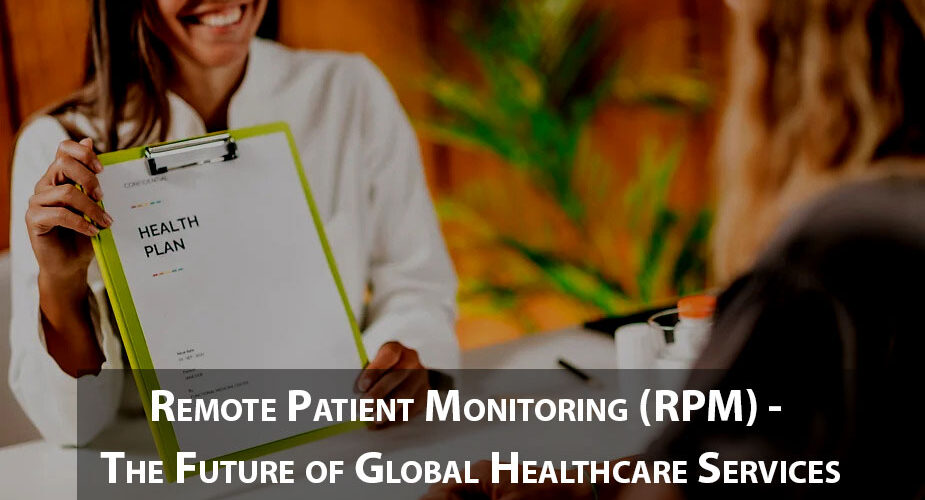
People have been using wearable medical and fitness devices for a long time. Several devices are available, like blood pressure cuffs, heart rate monitors, and more. These devices are beneficial not only for patients but are also favorable for medical providers. When it comes to the future of healthcare services, it is based on remote patient monitoring so that the time of the doctor and the patient can be saved.
What is remote patient monitoring?
RPM is a delivery system within the greater telemedicine sector and refers to the specific techniques utilized to electronically communicate information between patients and providers.
Healthcare professionals are aware of RPM’s potential as a crucial element in the transition to more proactive, continuous models of care. According to one forecast, the number of Americans using remote patient monitoring will nearly treble to 70.6 million by 2025, accounting for more than one-quarter of the population. The ongoing drive to remove patient care from the confines of the doctor’s office or healthcare institution and into patients’ daily life will support this expansion. But when new gadgets are created, one thought must constantly be present: for whom are these items being created?
Benefits of remote patient monitoring for medical providers
The uses of remote patient monitoring are not only limited to the patients but are equally beneficial to the medical providers. Let us have a look at the benefits they offer:
Increased output
RPM improves resource use, which boosts healthcare efficiency. RPM can promote quicker prioritization of care delivery, case triage, and enhanced communication by acquiring, conserving, and using patient data to enhance medical decision-making. RPM contributes to better performance and higher patient satisfaction.
RPM is also considered to help reduce the waiting room rush. Providers may accommodate more patients while concentrating more on those with urgent needs, thanks to simultaneous monitoring.
Our RPM software with your doctor will record them, and you can check BP, heart rate, and temperature are normal when you are at home or outside. You can ensure your health condition is normal by checking the report from your RPM wearable device. It is the right way to check patient history to improve health conditions and prevent diseases.
Practice revenue streams have grown.
RPM is advantageous to patients and providers alike. Boosting billable hours enables healthcare practitioners to claim for distant patient encounters like phone calls. Additionally, telemedicine practices reduce patient no-shows and boost efficiency in the workplace. RPM may help providers get a competitive advantage by helping them draw in and keep more patients with the use of cutting-edge care models.
Increased patient satisfaction and engagement
Patients are required by RPM to follow their maintenance or treatment plan since any noncompliance results in a charge to the patient’s account. RPM enhances patient accountability since they are aware that every deviation from their health management plan will be reported to their doctors.
RPM, on the other hand, will make professionals, as part of proactive therapy, teach their patients how to take care of themselves in between virtual clinical visits. With the rising incidence of chronic health concerns, remote monitoring is one technique utilized to optimize results while encouraging patient engagement.
Hospital stays are shorter.
The key to keeping a patient stable and generally healthy for patients who are particularly at risk is to limit or minimize the number of hospital visits a patient is subjected to. It is crucial for doctors and patients to lower the risk of hospitalization when 1 in 31 hospital patients are exposed to an infection connected to healthcare.
In order to prevent disease or injury from worsening to the point where hospitalization is necessary, doctors and patients must maintain dependable and regular contact with each other throughout the course of therapy. Doctors can track the evolution of sickness and injuries in real time thanks to remote patient monitoring.
In terms of self-reporting symptoms and any treatments given to patients at home, doctors are aware of the value of accurate information. Patients who visit a doctor’s office provide information that has been filtered through forgetfulness, their own (sometimes dubious) judgment, and hindsight. You frequently have to judge if you are receiving the complete story for yourself.
Move on and choose wisely. Using the RPM.
Making the appropriate decision is vital following Covid-19 since it may be the difference between life and death. The RPM system software from CCM may assist in both the battle against the coronavirus and the innovation of your conventional hospital. Here are a few advantages of CCM’s RPM system that aid the medical community in providing patients with better care:
- The RPM system’s user-friendly interface enables healthcare professionals to utilize it without further training. Utilizing this technique is straightforward and easy!
- Your extra degree of oversight is ensured by its Prognostic AI interface, which contributes to better patient outcomes and safety.
- The RPM system automates difficult operations like risk rating, data gathering, and information dissemination, allowing physicians and nurses to work more productively and efficiently.
Conclusion
Our RPM device is the best to use by any patient or a medical practitioner to monitor health remotely when they are away from medical checkup visits. It records your blood pressure, pulse rate, and body temperature. Thus, real-time health history recording via RPM enables you to help your patients with better health management.
